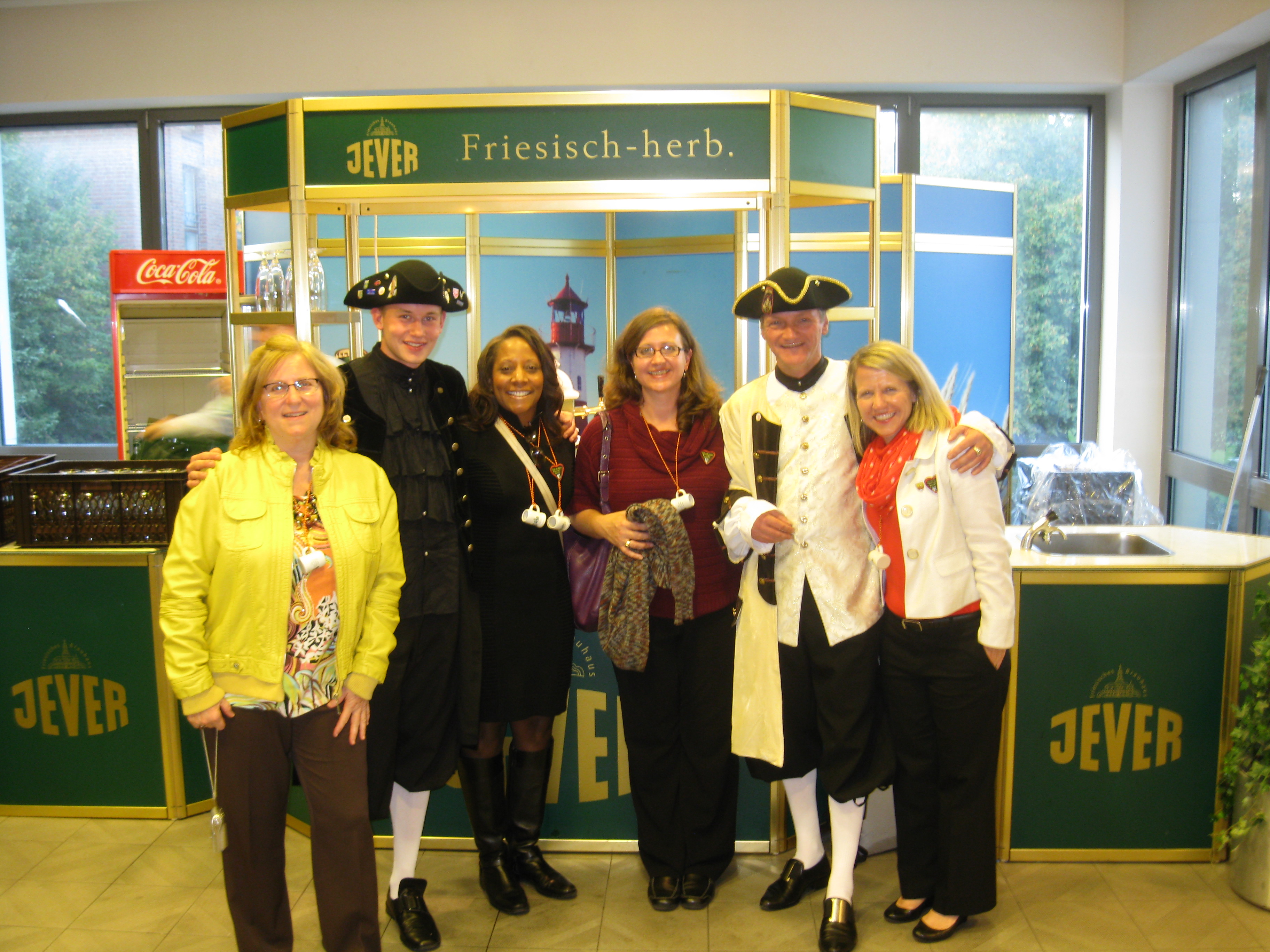When I think of Europe, I think of castles, fountains, sculptures, and people sitting at charming outdoor cafes on cobblestone streets sipping coffee or an aperitif. (What is an aperitif? I don’t know–but it fits in with my image). One thing I never would have associated with Europe is lack of reasons for people to visit or move there.

U.S. McCloy Fellows and hosts at Puckler’s Castle in Cottbus
Imagine my surprise when I was in the German city of Oldenburg in September, to hear the mayor voice his concerns over attracting talent to his city.
He is a fan of Richard Florida’s book Rise of the Creative Class on attracting talent, providing technology, and practicing tolerance. He incorporated the three “Ts” (talent, technology, and tolerance) to his vision of the city’s future. It struck me immediately that this mayor was avant garde. He wanted to get rid of the “good ol’ boys network,” so he eradicated some previous traditions, such as changing the guest list for the opening day of a big market. He passed over mayors and other potentates in his region and in their place invited more women, more young people, and people from a mix of cultural backgrounds.
The mayor is invested in changing things in his city and making it more welcoming to people of different ethnicities. “The idea of tolerance and integration fits in perfectly with our self-conception. Oldenburg regards itself as a modern city in a modern society. We appreciate the communication and mutual exchange with people from all over the world, we seek and keep friendship with them. In return, they contribute new views and insights to our community and make our city a better place.” The city has developed an integration pamphlet, and has a city department dedicated to integration, “The demographic development of Oldenburg shows that the city is dependent on the immigration of qualified workers from other countries.”
This went over like a ton of bricks. But he was savvy enough to realize that he couldn’t go full throttle with his vision-he needed to gently bring his citizens along with him. So, he added another “T” to the city’s motto: Tradition. The photo of the gentleman in “uniform” should clue you in on the city’s deep sense of tradition. This is the uniform of the town crier-the official who would go to the public square and announce the news of the day (like the town crier in London at the hospital announcing the birth of Prince William’s baby). The tradition is centuries old and people are not ready to chuck tradition yet.
This experience reinforced my belief in need for municipalities to think about their futures and how they are going to remain viable. Will all your young people move away and not come back? When they want to settle down and raise a family, what will draw them back to you? Will you have the amenities they desire? Because they will choose a place that offers what they want, and research shows they want technology, sustainability, walkability, a place that is welcoming to all, with art & culture. If European cities are concerned, Michigan cities should be concerned, too.
At the end of March, the League will be hosting four German fellows (through the McCloy Fellowship for Urban Affairs). Where will we take them? What will we show them? These were the questions that went through our minds. What we came up with is a behind-the scenes look at innovative projects in the city of Detroit. Detroit is crucial to a thriving Michigan, and it is getting a lot of international media coverage, and not the good kind. We are going to take this opportunity to show an international audience the Detroit that induces a passion in the people that love it-the sense of being able to make a difference, the perseverance of dogged individuals to make their city a better place.

